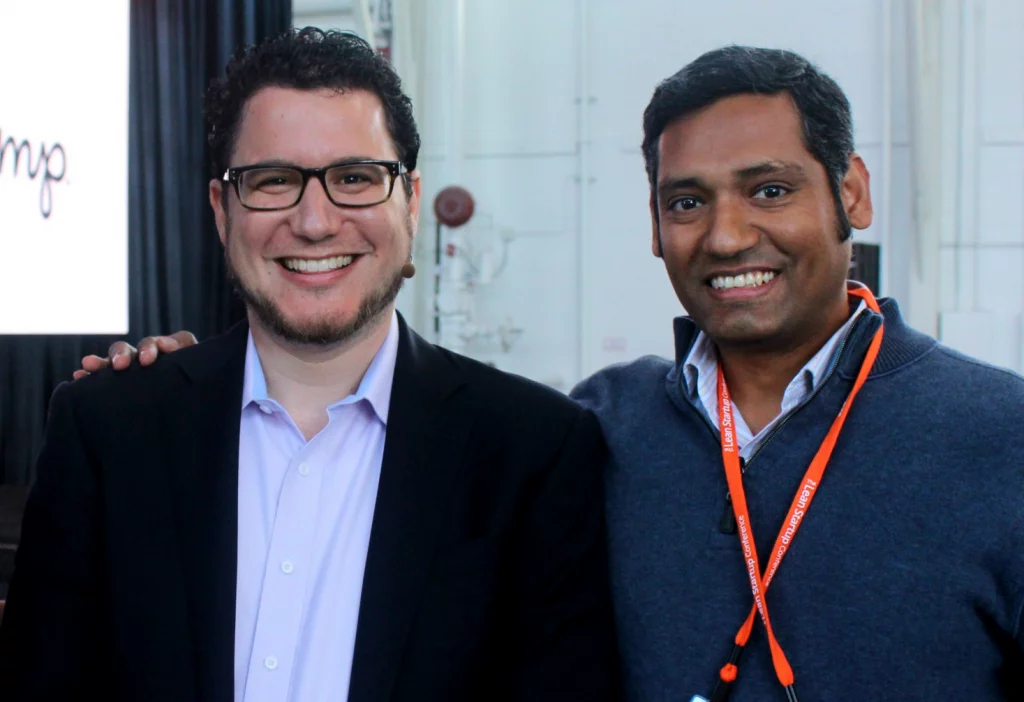The biggest names in the tech/startup world will be there. You come away inspired and energized. You hear great stories and experiences. You make great networking connections. But what truly sets it apart is the actionable content you come away with. It immediately changes how you work, consult, build products, develop customers, and engage users. New applications of Lean Startup, new methods of validation, new techniques of measurement – every year is different as adoption grows worldwide.
That’s why for me Halloween means deadly disruption, mesmerizing methodology, and sweet revenue models. Lean Startup Conference is like an invigorating jolt of innovation injected intravenously. (Sorry, I couldn’t help myself).
Jokes aside, Lean Startup is serious business. Last year, we heard about how data-crunching reading habits can predict Hollywood blockbusters, how TechStars is Scaling Lean using Culture Maps, and how gamification is growing into Game Thinking.
On a personal note, I learned about Behavioral Cohorting and how it can transform approaches to user engagement. Since I’m a Lean evangelist and am passionate about our Orlando community, I had speakers Laura Klein and Ariana Friedlander (speakers at the conference) speak to our local Lean Startup community. And this year will be my 3rd time at the conference. Why? As Eric Ries said:
The Lean Startup has evolved into a movement that is having a significant impact on how companies are built, funded and scaled.
So what’s LSC 2016 going to be like? Follow me @rajtv and check back here in November to find out!
What are your options?
Think through the following aspects to decide what your next steps are.
- Enhance Vs. Rebuild Vs. Rent: If you already sense that things aren’t perfect with an aging codebase, you need to start thinking about your 3 options:
- Maintain and enhance: If you feel the codebase will meet your needs a few years from now, then it may be worth the time and effort in maintaining and enhancing it
- Rebuild from scratch: If the codebase/architecture will not meet your needs 2-3years down the line – you need to start thinking about rebuilding and migrating the data
- Rent: Looking at the marketplace of packaged applications or Software as a service is not a bad idea. Your decision should be based on how much of your Intellectual Property and core business functionality is dependent on the software. If the software is not providing a unique competitive advantage then you may be better off using an off the shelf app.
- Is the current codebase sustainable? First you need to make a call on whether your current codebase can be resuscitated. Your current team may have biased opinions so you need to get an independent assessment on what reality is.
- What are your users asking for RIGHT NOW? Customer needs are ever-evolving and your business is too, but how far behind has the codebase fallen in serving these changing needs? It’s not just about is it doing what it was designed for – the question is – will it meet the needs of the future?
- Is doing nothing actually costing you big bucks? There are two components that could cost you dearly:
- Inefficiency: Old codebases can be tricky and fragile so adding new features are higher risk, harder to enhance, and slow. This means the same feature built in a brand-new codebase using modern coding practices could be 2-3X faster. Typically support and maintenance are less than 10% of costs for a new codebase with 90% going towards new features. That ratio keeps changing to where steady state is more like 50-50. Old codebases leak money and it adds up.
- Opportunity Cost: This is an under-appreciated but super-critical aspect of budgeting and decision making. You could deploy resources more efficiently or go after a brand-new customer segment but you are saddled with the current constraints of working with the old codebase. How much money are you leaving on the table for your competitors to pick up?
Unnecessary risks are for noobs
As Donald Rumsfeld said there are 3 categories of knowledge: Things you know, things you know that you don’t know, and things you don’t know that you don’t know. If you get hit by something you never knew about – that’s just hard luck. However, when someone knows the costs and risks associated with aging software and still continues to expose themself to those risks – well they have no one else to blame.
But it doesn’t have to be that way. Take the known unknowns and make them fully known with an independent review that gives you the information to make the right decision for the long term.
Need help? Reach out to us at [email protected] to learn how our code and architecture reviews can radically cut costs and improve productivity for your team! Our assessments cover code quality, architecture, security, functional quality, performance, team best practices, and much more.

